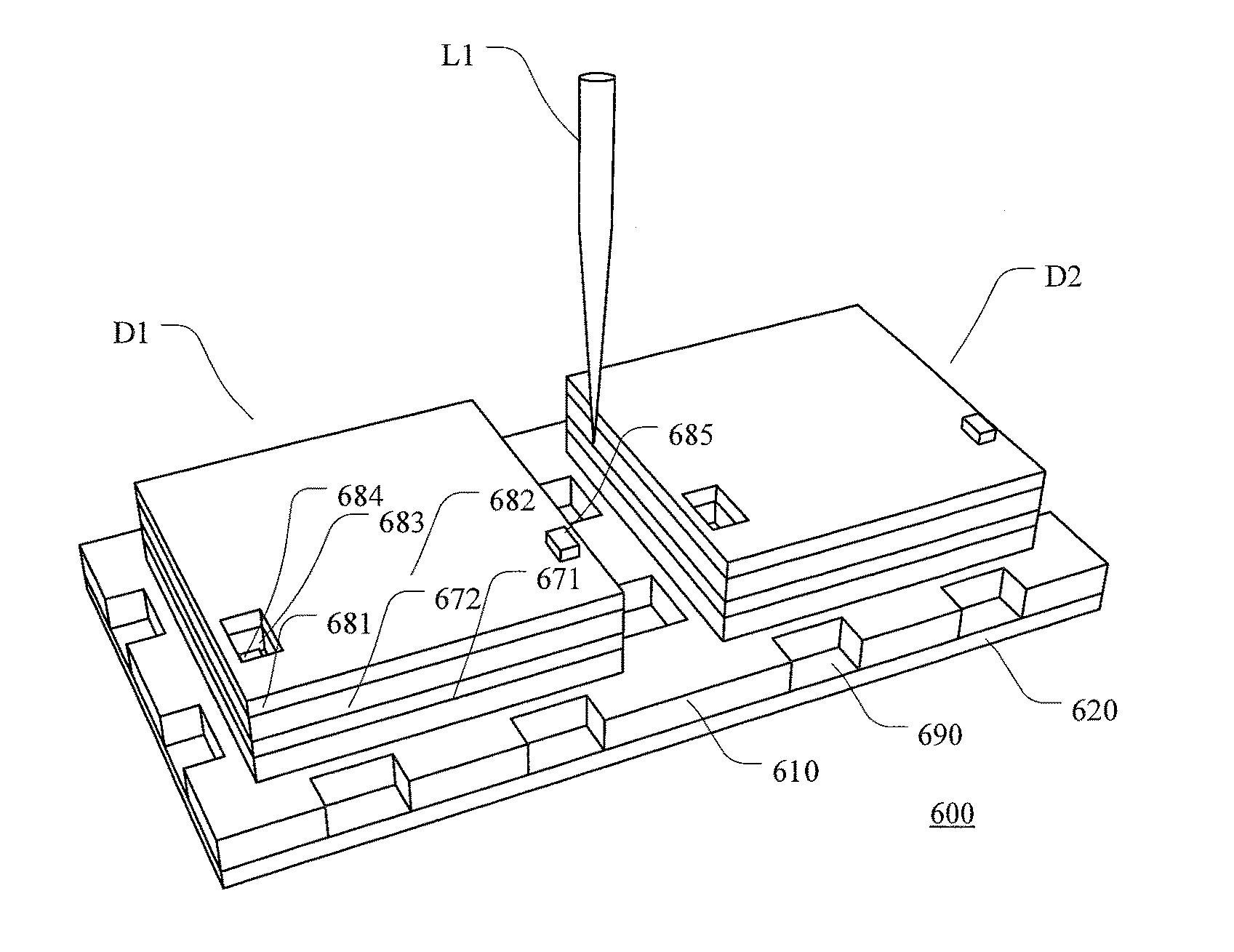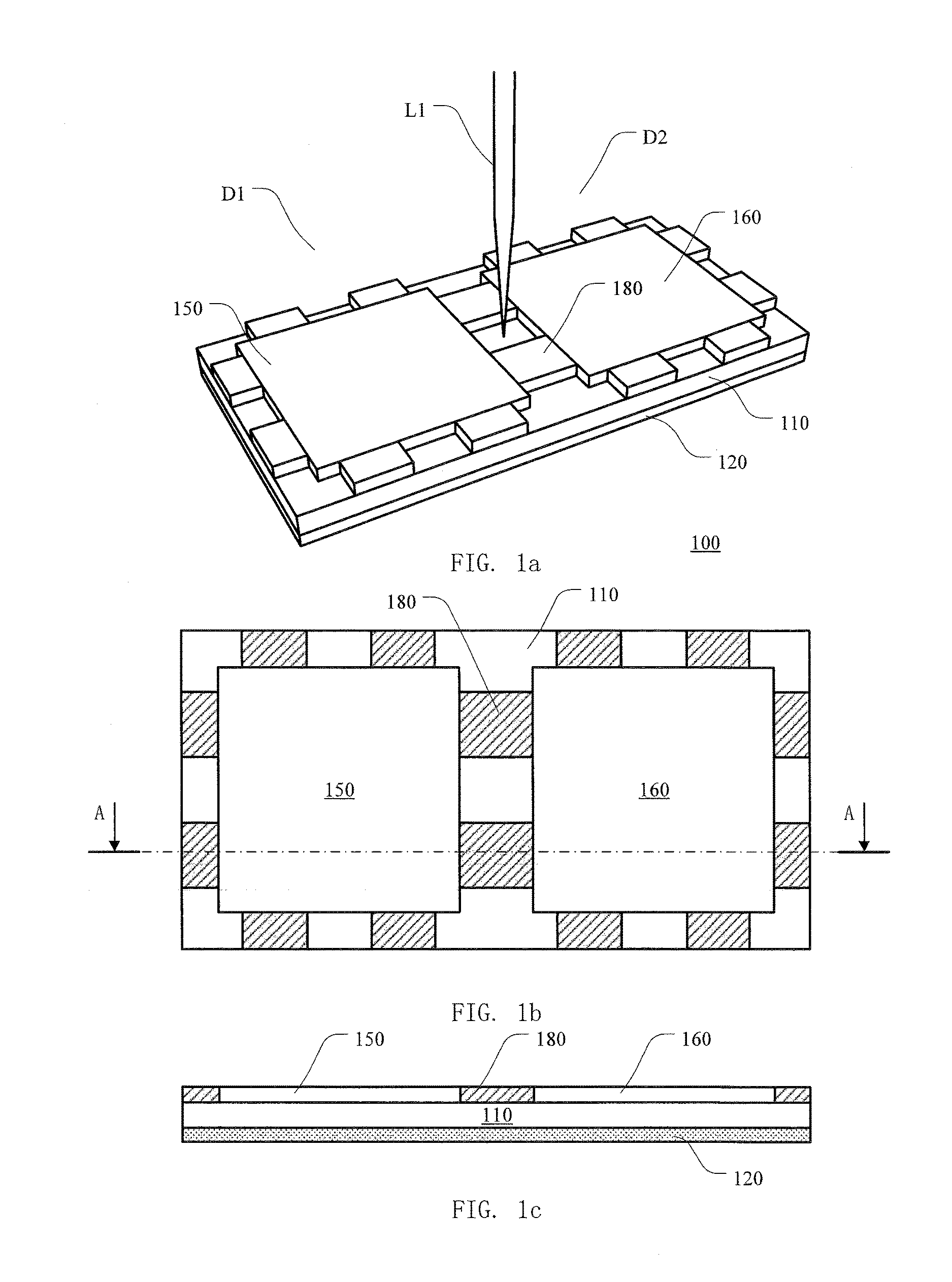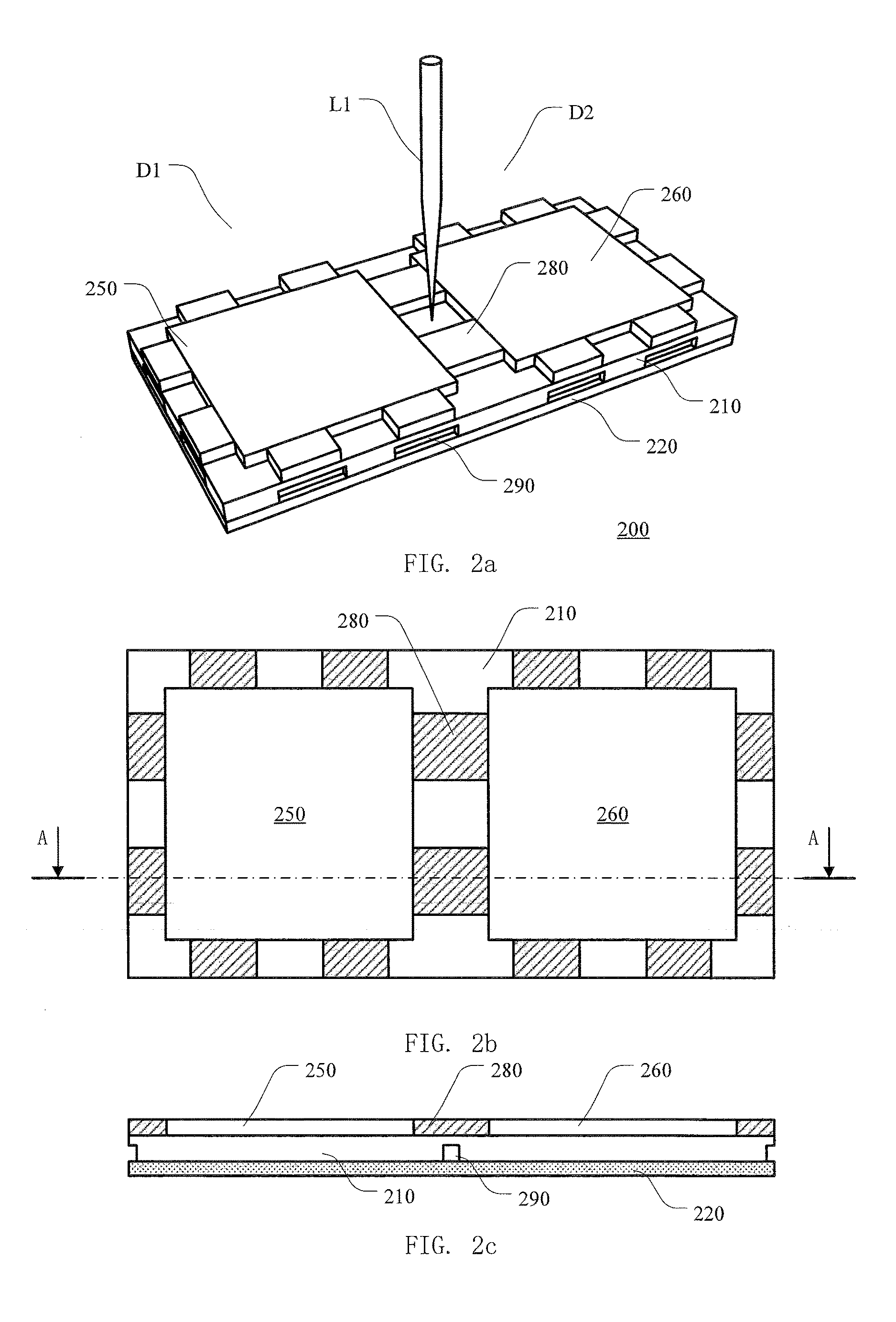Wafer structure and processing method thereof
a technology of wafer structure and processing method, which is applied in the direction of semiconductor electrostatic transducers, semiconductor/solid-state device testing/measurement, loudspeakers, etc., can solve the problems of failure of die singulation, damage to the die, and difficult penetration of the functional layer of the wafer, so as to improve the yield of the die, reduce manufacturing costs and die costs, and improve the intensity of the wafer structure
- Summary
- Abstract
- Description
- Claims
- Application Information
AI Technical Summary
Benefits of technology
Problems solved by technology
Method used
Image
Examples
first embodiment
[0068]FIG. 2a to FIG. 2c illustrate schematic diagrams of a wafer structure according to the disclosure in a perspective view, in a top view and in a cross-sectional view, respectively. The cross sectional view shown in FIG. 2b is taken along the line AA indicated in the cross-sectional view shown in FIG. 2c.
[0069]As illustrated as FIG. 2a to FIG. 2c, the wafer structure 200 comprises a semiconductor substrate 210 with a plurality of functional layers 250, 260 and 280 on its first surface, and an adhesive film 220 on the second surface of the semiconductor substrate 210, where the second surface is opposite to the first surface of the semiconductor substrate 210. The wafer structure 200 provides two dies D1 and D2 which are separated by a scribe lane, wherein the die D1 comprises the functional layer 250 and a portion of the semiconductor substrate 210, and the die D2 comprises the functional layer 260 and another portion of the semiconductor substrate 210. The functional layer 280...
second embodiment
[0075]FIG. 3a to FIG. 3c illustrate schematic diagrams of a wafer structure according to the disclosure in a perspective view, in a top view and in a cross-sectional view, respectively. The cross sectional view shown in FIG. 3b is taken along the line AA indicated in the cross-sectional view shown in FIG. 3c, and the cross sectional view shown in FIG. 4 is taken along the line BB.
[0076]As illustrated as FIG. 3a to FIG. 3c, the wafer structure 300 comprises a semiconductor substrate 310 with a plurality of functional layers 350, 360 and 380 on its first surface, and an adhesive film 320 on the second surface of the semiconductor substrate 310, where the second surface is opposite to the first surface of the semiconductor substrate 310. The wafer structure 300 provides two dies D1 and D2 which are separated by a scribe lane, wherein the die D1 comprises the functional layer 350 and a portion of the semiconductor substrate 310, and the die D2 comprises the functional layer 360 and anot...
third embodiment
[0081]FIG. 5a to FIG. 5c illustrate schematic diagrams of a wafer structure according to the disclosure in a perspective view, in a top view and in a cross-sectional view, respectively. The cross sectional view shown in FIG. 5b is taken along the line AA indicated in the cross-sectional view shown in FIG. 5c, and the cross sectional view shown in FIG. 7 is taken along the line BB.
[0082]As illustrated as FIG. 5a to FIG. 5c, the wafer structure 400 comprises a semiconductor substrate 410 with a plurality of functional layers 450, 460 and 480 on its first surface, and an adhesive film 420 on the second surface of the semiconductor substrate 410, where the second surface is opposite to the first surface of the semiconductor substrate 410. The wafer structure 400 provides two dies D1 and D2 which are separated by a scribe lane, wherein the die D1 comprises the functional layer 450 and a portion of the semiconductor substrate 410, and the die D2 comprises the functional layer 460 and anot...
PUM
 Login to View More
Login to View More Abstract
Description
Claims
Application Information
 Login to View More
Login to View More - R&D
- Intellectual Property
- Life Sciences
- Materials
- Tech Scout
- Unparalleled Data Quality
- Higher Quality Content
- 60% Fewer Hallucinations
Browse by: Latest US Patents, China's latest patents, Technical Efficacy Thesaurus, Application Domain, Technology Topic, Popular Technical Reports.
© 2025 PatSnap. All rights reserved.Legal|Privacy policy|Modern Slavery Act Transparency Statement|Sitemap|About US| Contact US: help@patsnap.com



